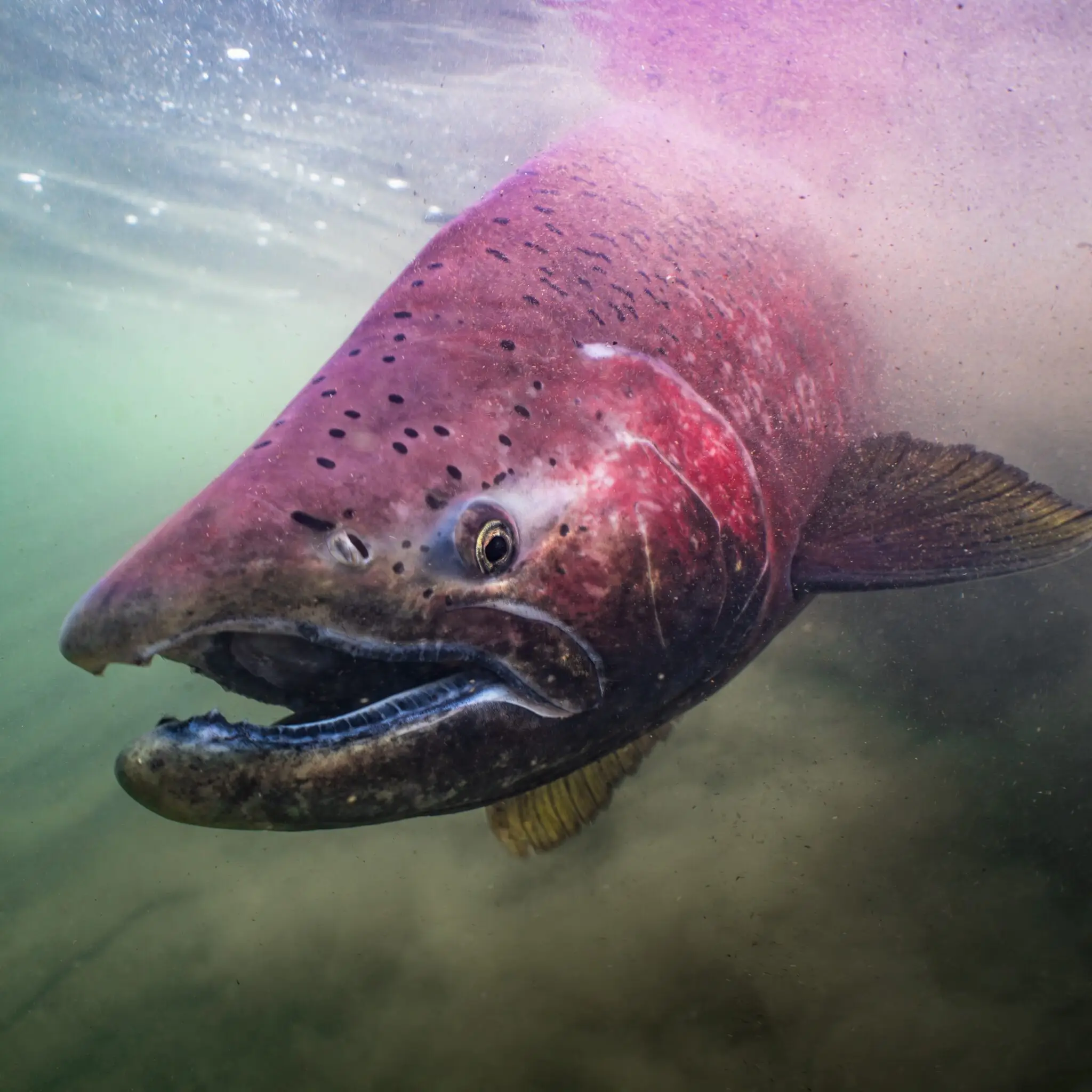
Alaska’s Chinook are in Peril, A Plea for Protection under the Endangered Species Act
Today, Wild Fish Conservancy is filing a petition urging federal protection of Alaskan Chinook salmon, also known as ‘king’ salmon, under the Endangered Species Act. We’re taking this emergency action in response to the severe decline and poor condition of wild Chinook populations throughout the state of Alaska.
While Alaska is often perceived as having abundant salmon populations, scientists have been sounding the alarm for decades that Alaska’s Chinook are in dire trouble. Despite existing management plans and years of efforts by state resource managers, Alaska’s own data shows the majority of Chinook populations throughout the state have experienced significant decline, not only in abundance, but also in size, diversity, and spatial structure. Over the last decade alone, many populations have been recognized by Alaska as stocks of conservation concern, arising from the chronic failure to maintain minimum population goals despite regulatory actions.
Despite the severe condition and continued decline of Alaskan Chinook, none of these fish currently receive protection under the Endangered Species Act. In fact, some Alaskan Chinook populations are in far worse condition than Chinook in other parts of the Pacific Northwest that already receiving Endangered Species Act protection to ensure their survival.
“Ironically, certifiers and the seafood industry have been leading concerned consumers to believe Chinook from Alaska are sustainable, when in fact they are disappearing before our very eyes.
Conrad Gowell, Biologist & Petition Co-Author, Wild Fish Conservancy
No one wants to be eating the last wild Chinook from any river.”
Recent declines have been so severe that both tribal and non-tribal subsistence Chinook fisheries have been closed in many parts of Alaska. As an example, Alaska’s Chignik River located on the Alaska Peninsula near the village of Chignik is the largest Chinook salmon producing system on the southern shore of the Alaska Peninsula. After years of declining returns, both sport fishing and subsistence fisheries for native and non-native Alaskans were forced to close completely in 2022 and 2023.
Through today’s listing petition, we are asking the federal government to undertake a formal status review and implement protections warranted under the Endangered Species Act, including designating critical habitat protections, to ensure the survival of these iconic fish. The proposed safeguards would increase protection for imperiled Chinook populations from the Canadian border north to the Aleutian Islands, including watersheds of Southeast, Cook Inlet, and Southcentral Alaska.
Persistent threats to Alaskan Chinook include mixed-stock commercial and sport fishing (which cannot avoid killing at-risk populations or immature salmon), bycatch in industrial trawl fisheries, habitat threats from climate change and extractive industries such as logging and mining, as well as competition from hatchery fish in both marine and freshwater environments. These threats come from both sources within Alaska and beyond.

While the need for today’s action is no cause for celebration, the positive news is that many of these challenges facing wild Chinook are well understood and have known solutions that could be incorporated into a recovery plan.
In addition to calling for greater protections for imperiled Chinook, Wild Fish Conservancy is advocating at a coastwide scale to fundamentally change salmon management principles that have led to the need for Endangered Species Act protections throughout the Pacific Northwest. Examples include, calling for expanding marine protection along the migratory corridor and the nursery rearing environment salmon need in the ocean, habitat restoration and protection efforts that allow fish to adapt to a changing climate, and a shift away from harmful mixed-stock ocean fisheries to fisheries in or near rivers where salmon return capable of protecting at-risk salmon. This transition will be required to ensure enough fish return to their spawning grounds and to restore control to local communities over the recovery of their local salmon runs.
Thank you to all our members and supporters for making this work possible. If you’d like to learn more, we encourage you to read the entirety of the petition or check out the frequently asked questions. The data collected by the State of Alaska on the status of Chinook populations speaks strongly.
Join our mailing list to recieve important updates on our work, the latest wild fish news, & opportunities to take action to support wild fish.
This site is protected by reCAPTCHA and the Google Privacy Policy and Terms of Service apply.
Wild Fish Conservancy is recognized as a 501(c)3 non-profit by the IRS